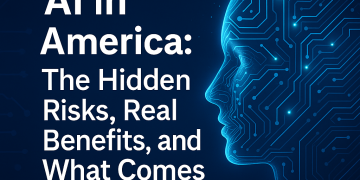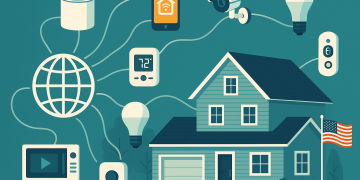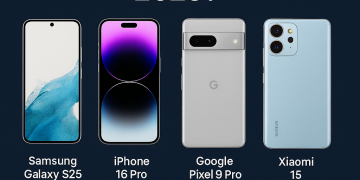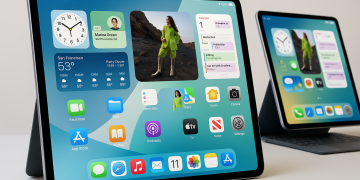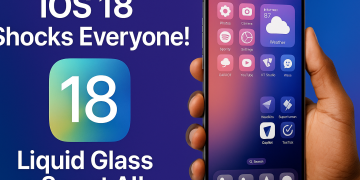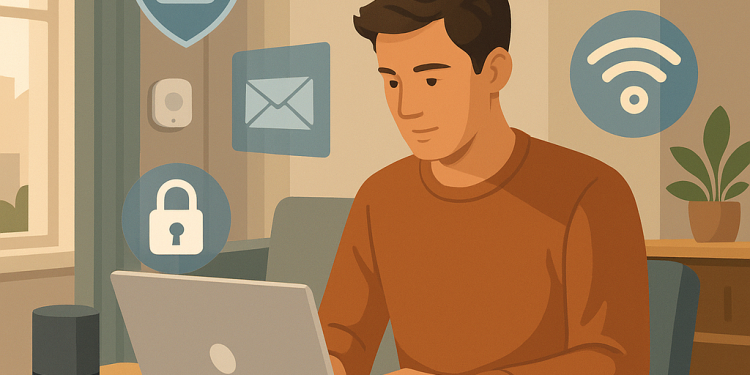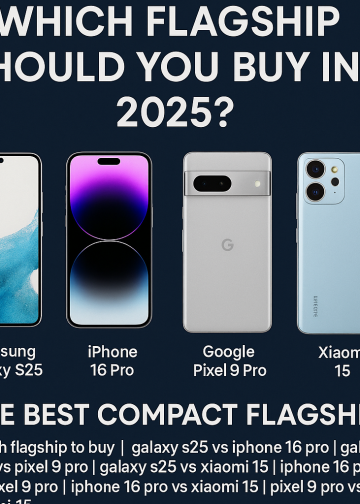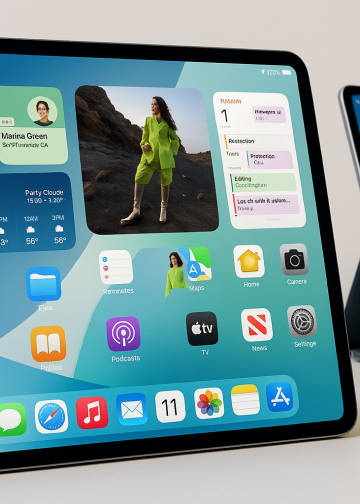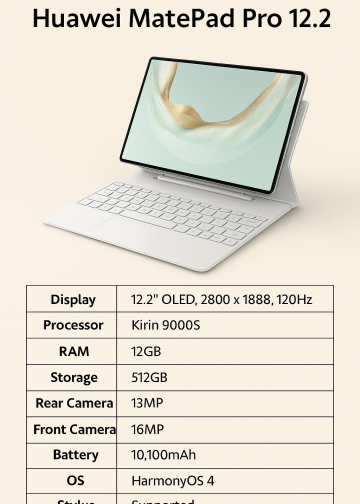Introduction: The Urgent Need for Cybersecurity in 2025
Keywords: cybersecurity 2025, data protection, online security
Let’s face it: the world in 2025 is more connected than ever before. You probably wake up to a smart alarm, check your bank account from your phone, work in the cloud, and have your health records stored digitally. The conveniences are incredible, but so are the risks. The reality is, cybersecurity in 2025 is not just an IT issue—it’s an everyday priority, woven into the fabric of modern life for individuals, families, and businesses.
So, what does data protection really mean in a world where your refrigerator, car, and even your fitness tracker might be connected to the internet? In this guide, we’ll walk through the threats, the tools, and the best practices that define online security and tech safety in this brave new world, making digital privacy not just possible, but practical for everyone.
The Evolving Threat Landscape: What’s New in Cybersecurity 2025?
Keywords: cybersecurity 2025, tech safety, online security
Every year, cybercriminals get smarter, and 2025 is no exception. We’re way past the days of simple viruses or email scams. Today, the threats are more complex and, frankly, more terrifying. Think deepfake phishing attempts, AI-powered ransomware, and massive data breaches targeting everything from multinational banks to your local school.
Major Threats in 2025:
- AI-driven Attacks: Hackers now use artificial intelligence to automate attacks and adapt to security systems in real time.
- IoT Vulnerabilities: With billions of smart devices online, each is a potential entry point for a hacker. Imagine your thermostat being the weak link!
- Supply Chain Attacks: Hackers don’t need to target you directly—they’ll go after your vendors, partners, or even your software updates.
- Deepfake & Social Engineering: Fake audio and video are so convincing in 2025, it’s hard to tell real from fake. Scammers trick employees into transferring money or sharing passwords with what sounds like a boss’s real voice.
- Critical Infrastructure Attacks: Power grids, water supplies, and hospitals are all fair game for cybercriminals, with devastating real-world consequences.
Tech safety in 2025 isn’t just about stopping hackers—it’s about staying one step ahead in a constantly shifting landscape.
Why Data Protection Is Personal
Keywords: data protection, digital privacy, online security
It’s easy to think of cybersecurity as something that only matters to corporations or governments. But in 2025, data protection is a deeply personal issue. Your emails, text messages, health records, even the photos you upload are all part of your digital identity.
Digital Privacy at Risk:
- Social Media Data: Even a simple quiz app on Facebook can collect and sell your private data.
- Location Tracking: Smartphones, wearables, and connected cars constantly log your whereabouts—potentially exposing you to real-world risks.
- Biometric Data: Face recognition, fingerprints, and even voiceprints are now used to unlock devices—but if stolen, they can’t be “reset” like a password.
Digital privacy is about controlling who has access to your life story. In 2025, if you’re not paying attention, your personal data could easily end up in the wrong hands.
How Businesses Are Rethinking Tech Safety in 2025
Keywords: tech safety, cybersecurity 2025, data protection
Companies of all sizes are under constant attack, but the stakes in 2025 have never been higher. Data breaches don’t just cause financial losses—they destroy trust and can ruin a reputation overnight.
Business Cybersecurity Essentials:
- Zero Trust Networks: Instead of trusting anyone inside the network, every access attempt is verified, regardless of location or device.
- Employee Training: People are still the weakest link, so companies now run continuous, real-time security awareness programs—sometimes with AI-generated phishing simulations.
- Incident Response Plans: No system is 100% safe, so businesses have playbooks ready for everything from ransomware to insider threats.
Most importantly, data protection regulations are stricter than ever, with heavy fines for companies that don’t protect consumer data. For businesses, tech safety is now as critical as physical safety.
The Rise of Artificial Intelligence in Online Security
Keywords: online security, cybersecurity 2025, AI security
The good news: we’re not defenseless. In fact, artificial intelligence is being used to fight fire with fire in cybersecurity 2025.
How AI Is Powering Defense:
- Threat Detection: Machine learning can spot unusual activity in a network instantly, flagging breaches that a human might miss.
- Automated Response: AI can isolate infected devices, block malicious traffic, and even rollback changes to neutralize ransomware—sometimes before you’re even aware of a problem.
- Predictive Security: By analyzing past attacks, AI can predict new threats and close vulnerabilities before hackers can exploit them.
But there’s a catch: as AI gets smarter, so do the hackers’ tools. The cybersecurity arms race is heating up, and both sides are constantly innovating.
Cloud Security in 2025: Protecting Data Beyond Borders
Keywords: data protection, cloud security, digital privacy
The cloud is no longer just for tech giants. In 2025, even small businesses and individuals store their data in cloud platforms. This convenience comes with big data protection challenges.
Top Cloud Security Trends:
- Multi-Factor Authentication (MFA): It’s standard to require not just a password, but also a fingerprint, a text code, or even a facial scan to log in.
- End-to-End Encryption: Data is encrypted not just at rest, but as it moves between your device and the cloud.
- Cloud Access Security Brokers (CASB): These are “gatekeepers” that monitor traffic between cloud users and applications, flagging suspicious activity.
Digital privacy in the cloud means understanding not just who you’re sharing data with, but where that data is stored—and how it’s protected from threats all over the globe.
The Internet of Things: Securing a Hyper-Connected World
Keywords: tech safety, online security, cybersecurity 2025
If you thought the internet was big in 2015, imagine the Internet of Things (IoT) in 2025. Your fridge, your car, your dog’s GPS collar—all online, all vulnerable. The more we connect, the more opportunities hackers have.
Smart Ways to Stay Safe:
- Change Default Passwords: Many IoT hacks start because people never update the basic admin password.
- Regular Updates: Like your phone, your smart devices need regular software updates to patch vulnerabilities.
- Network Segmentation: Keep smart devices on a separate WiFi network from your main computers and phones.
Tech safety isn’t just about protecting your laptop anymore—it’s about locking down everything from your baby monitor to your smart TV.
Protecting Digital Privacy: Tips for Individuals in 2025
Keywords: digital privacy, online security, data protection
With all these threats, you might feel like giving up and going off the grid. But you don’t need to! Here are practical steps everyone can take to protect their digital privacy in 2025:
- Use Strong, Unique Passwords: Password managers are a lifesaver. Never use the same password twice—seriously.
- Enable Two-Factor Authentication (2FA): This adds a second layer of security, making it much harder for hackers to get in.
- Be Skeptical: If an email, text, or call seems suspicious—even if it looks official—double-check before clicking anything or sharing personal info.
- Limit Data Sharing: Review app permissions regularly, and don’t grant access to your camera, microphone, or location unless absolutely necessary.
- Update Regularly: Keeping your devices and apps up-to-date is one of the easiest ways to close security holes.
The bottom line: online security is a shared responsibility. A little vigilance goes a long way toward data protection.
The Role of Government and Regulation in Cybersecurity 2025
Keywords: cybersecurity 2025, digital privacy, data protection
Laws and government agencies play a bigger role than ever in cybersecurity 2025. From national security to protecting everyday citizens, new rules shape the way organizations collect, store, and use data.
Major Developments:
- Stronger Privacy Laws: Think GDPR, but stricter—new U.S. regulations give consumers more rights to control their data, request deletion, and hold companies accountable.
- Mandatory Breach Notifications: Companies must report data breaches quickly, so users can take steps to protect themselves.
- Cybersecurity Education Initiatives: Public awareness campaigns help Americans recognize scams, use secure passwords, and understand their rights online.
The message is clear: data protection and digital privacy are now public policy priorities, not just tech buzzwords.
The Human Factor: Education and Awareness
Keywords: online security, tech safety, cybersecurity 2025
No matter how good the technology, people will always be the first and last line of defense. Cybersecurity 2025 is as much about education as it is about software and firewalls.
Building a Culture of Security:
- Regular Training: Companies and schools now offer ongoing cybersecurity training, making sure everyone knows about the latest threats.
- Family Safety: Kids are growing up online—parents and teachers have to talk openly about cyberbullying, scams, and privacy.
- Community Resources: Libraries and community centers offer classes on password safety, secure browsing, and digital hygiene.
When everyone understands tech safety, it’s much harder for attackers to succeed.
Looking Ahead: The Future of Online Security
Keywords: cybersecurity 2025, online security, tech safety, digital privacy
What’s next? The arms race between hackers and defenders will never stop, but there’s reason for optimism. Cybersecurity in 2025 is more proactive, more intelligent, and more collaborative than ever before.
What to Watch For:
- Quantum-Resistant Encryption: As quantum computers become real threats, new forms of encryption will keep data safe against next-generation attacks.
- AI-Powered User Authentication: Forget passwords—soon, your devices may recognize your unique patterns of speech, movement, and even heart rate.
- Global Collaboration: Cybercrime knows no borders, and neither do the best defenders. Expect more international partnerships, information sharing, and joint efforts to take down criminal networks.
The challenge is real, but the tools are evolving. Staying alert, informed, and adaptable will help everyone—not just the techies—keep their data and privacy safe.
External Links
- Cybersecurity & Infrastructure Security Agency (CISA)
- National Cybersecurity Alliance
- FTC: Consumer Data Privacy
- SANS Internet Storm Center
Call to Action
Are you ready to take control of your online security? Share your own cybersecurity tips or stories in the comments! For more guides on cybersecurity 2025, tech safety, and digital privacy, subscribe to our newsletter and stay one step ahead in a connected world. And if you found this helpful, pass it along—because everyone deserves safer data in 2025.







